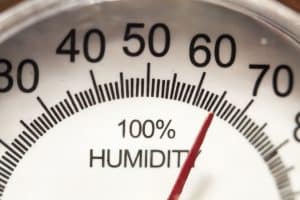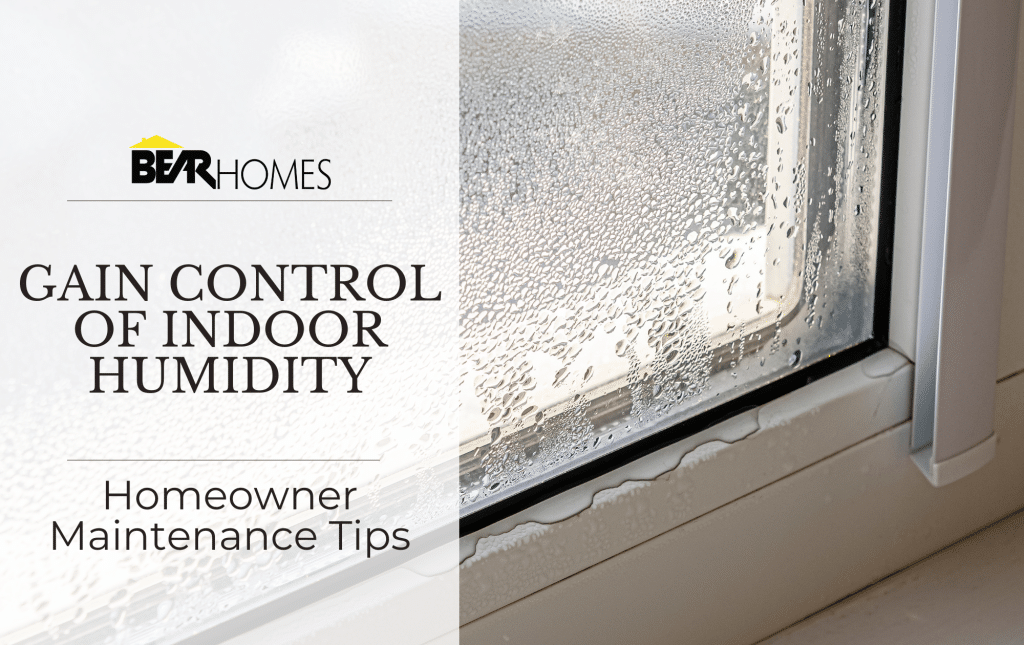Understanding and Managing Window Condensation in Your Home
As winter embraces Wisconsin, many homeowners face the challenge of window condensation. This phenomenon occurs when warm, moist air contacts a colder surface, leading to water droplets or frost on your windows. While it might seem troubling, there are effective ways to manage and reduce this condensation in your home.
Why Condensation Occurs in New Homes
Newly constructed homes often experience higher levels of condensation, a phenomenon influenced by several factors. One primary reason is the moisture retained in building materials such as lumber, concrete, drywall, paint, etc. As these materials gradually release moisture into the home’s interior, the humidity levels can increase, leading to condensation.
Moreover, today’s energy-efficient and well insulated homes are designed to minimize heating and cooling costs. While this is beneficial for energy conservation and maintaining comfortabl indoor temperatures, the same building techniques that block outdoor air from entering also restrict moisture from efficiently venting to the outdoors. This results in higher indoor humidity levels, which can contribute to window condensation. By understanding these factors, homeowners can take more effective steps to manage indoor moisture and prevent condensation issues.
Practical Tips to Reduce Indoor Humidity
Reducing indoor humidity to combat window condensation is surprisingly straightforward. Follow these tips to combat high indoor humidity
- Regularly operate a dehumidifier to maintain optimal indoor humidity.
- Allow sunlight and air to circulate by keeping blinds, heating vents, and, or shades open.
These easy-to-implement strategies are a few of the many ways to effectively maintain a comfortable environment and minimize window condensation in your home, enhancing both your living space and the longevity of your windows.
Keep Consistent Ventilation and Air Movement
Kitchens and bathrooms are high humidity zones in any home. Utilizing over-the-range vents when cooking is essential to expel moist air effectively. But these vents aren’t just useful during cooking; running them occasionally even when not cooking can help maintain consistent air quality and reduce overall humidity levels in your home.
Similarly, bathroom fans play a crucial role in moisture control. While it’s important to run these fans during and for 30 to 60 minutes after showers to prevent moisture accumulation, consider using them periodically throughout the day as well. This practice is particularly effective in homes where moisture tends to build up easily.
Good air circulation is the cornerstone of minimizing condensation. Think of it like using a car’s defroster: circulating air prevents moisture from settling on cool surfaces. By ensuring that air can move freely around your home, not only around high-moisture areas like kitchens and bathrooms, you help in maintaining a balanced indoor climate. Regular use of vents and fans, even when the primary activities like cooking or bathing aren’t happening, contributes significantly to this process.
How to Monitor Your Indoor Humidity

A hygrometer is an inexpensive yet invaluable tool for monitoring your home’s humidity. This device can guide you to maintain appropriate humidity levels, minimizing condensation. You can purchase a hygrometer at most hardware stores.
FAQs About Window Condensation
- Do windows or doors cause roomside condensation?
Windows and doors do not cause condensation. Typically, the first place condensation can be seen is on window and door glass. Just like your bathroom mirror doesn’t cause condensation after a hot shower and your car windows don’t cause interior frost in the winter when several passengers are in the vehicle; the cooler surface is where it collects.
- Why does roomside condensation occur?
Condensation is water appearing on the roomside of windows and doors because conditions are just right for this to happen. The roomside glass surface temperature is at or below the dew point for the amount of moisture (humidity) in the inside air. When warmer air, which can hold more moisture than cooler air, contacts the cool surface of the glass, the air condenses and squeezes the water out onto the cool surface.
- What causes excess humidity in the home?
Everyday living: Showers, baths, cooking, washing dishes, laundry, dog water bowls and cleaning all add moisture to the air in your home; as much as 4 gallons or more per day in some homes. People even exhale moisture into the air as they breathe. Home construction: Today’s energy-efficient, well-insulated homes help hold down heating and cooling costs; however, the same building techniques that help block outdoor air from entering our homes also keep moisture from venting to the outdoors.
- Is roomside condensation more likely to occur in certain climates or times of year?
In areas where temperatures average 35 degrees or less, condensation is more likely to occur.
Window condensation is a manageable aspect of home maintenance. Embrace these expert tips to understand and control your indoor humidity to keep your home cozy and clear this winter. For more insights into efficient home maintenance, stay tuned to our blog.
Interested in a New Construction Home in SE WI? Send us a Message!

